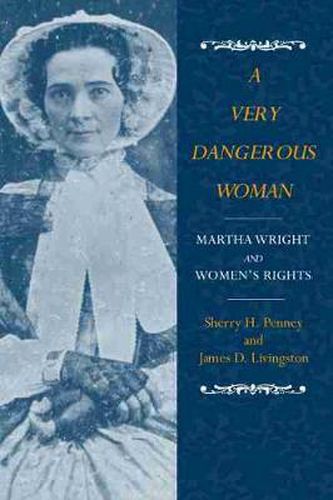Readings Newsletter
Become a Readings Member to make your shopping experience even easier.
Sign in or sign up for free!
You’re not far away from qualifying for FREE standard shipping within Australia
You’ve qualified for FREE standard shipping within Australia
The cart is loading…






The first biography of a pioneering women’s rights activist; A very dangerous woman is what Martha Coffin Wright’s conservative neighbors considered her, because of her work in the women’s rights and abolition movements. In 1848, Wright and her older sister Lucretia Mott were among the five brave women who organized the historic Seneca Falls Women’s Rights Convention. Wright remained a prominent figure in the women’s movement until her death in 1875 at age sixty-eight, when she was president of the National Woman Suffrage Association. At age twenty-six, she attended the 1833 founding of the American Anti-Slavery Society and later presided over numerous antislavery meetings, including two in 1861 that were disrupted by angry antiabolitionist mobs. Active in the Underground Railroad, she sheltered fugitive slaves and was a close friend and supporter of Harriet Tubman. In telling Wright’s story, the authors make good use of her lively letters to her family, friends, and colleagues, including Susan B. Anthony and Elizabeth Cady Stanton. These letters reveal Wright’s engaging wit and offer an insider’s view of nineteenth-century reform and family life. Her correspondence with slavehol
$9.00 standard shipping within Australia
FREE standard shipping within Australia for orders over $100.00
Express & International shipping calculated at checkout
The first biography of a pioneering women’s rights activist; A very dangerous woman is what Martha Coffin Wright’s conservative neighbors considered her, because of her work in the women’s rights and abolition movements. In 1848, Wright and her older sister Lucretia Mott were among the five brave women who organized the historic Seneca Falls Women’s Rights Convention. Wright remained a prominent figure in the women’s movement until her death in 1875 at age sixty-eight, when she was president of the National Woman Suffrage Association. At age twenty-six, she attended the 1833 founding of the American Anti-Slavery Society and later presided over numerous antislavery meetings, including two in 1861 that were disrupted by angry antiabolitionist mobs. Active in the Underground Railroad, she sheltered fugitive slaves and was a close friend and supporter of Harriet Tubman. In telling Wright’s story, the authors make good use of her lively letters to her family, friends, and colleagues, including Susan B. Anthony and Elizabeth Cady Stanton. These letters reveal Wright’s engaging wit and offer an insider’s view of nineteenth-century reform and family life. Her correspondence with slavehol